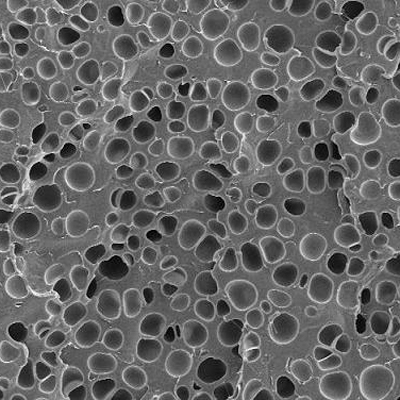An Overview: Masterbatch | Plastics Technology

A Masterbatch is a concentrated mixture obtained by the distribution of colours and additives into a polymer carrier by heat treatment and in-particularly a high shear mixing extruder. The mixture is then cooled, cut and formed into granules via a pelletiser. The production of masterbatch creates great demands on the compounding process: The pigment and additive parts need to be merged into the base polymer completely homogeneously.
The alternatives to applying masterbatches are obtaining a fully compounded material from raw materials on site. In comparison with pure pigments, masterbatches need extra storage space and longer lead times. Another drawback is additional exposure of heat to both the carrier and the additive; which is essential for marginally thermal stable pigments. As masterbatches are premixed compositions, they use and mitigates the problems with the additive deficient dispersion. The blend of the additive in the masterbatch is higher than in the end polymer, but the additive properly dispersed in the master resin. In a way, they are associated with the use of ferroalloys for combining alloying components to steels.
Masterbatches are highly concentrated with high \"let down ratios\", one tonne of a natural polymer can fit into a 25 kg bag. Masterbatches dilute nature, allows higher accuracy in dosing of expensive components. Masterbatches solid crystals are solvent free and tend to have a longer shelf life as the solvent in the polymer won't evaporate. They generally contain 40-65 per cent additives, but the range can be altered from 15-80 per cent in few additional cases. Liquid masterbatches allow highly precise dosing and instant change of colour between machine runs.
Types of Masterbatch:
• White Masterbatch
• Black Masterbatch
• Colour Masterbatch
• Additive Masterbatch
• Special Effect Masterbatch
White Masterbatch:
White masterbatch has a wide range of applications, lamination, coating, pipes, thermo-forming, protective films, fibres and in non-woven, blow moulding and injection moulding. State-of-art production capabilities contain high quality outdoor and indoor Titanium dioxide (TiO2) grades. TiO2 provides opacity by reflecting the light which is possible, due to its ability to scatter light. This is performed by refraction and diffraction of light, as it passes through the titanium dioxide particles. If there is enough light through the surface it will be reflected outward, and the object will appear opaque.
Benefits
• Superior dispersion
• Thick and thin wall applying for Injection and Blow Moulding
• Extrusion, Cast and Brown coating Films.
• Ease of consolidation
• Food acceptable grades
Black Masterbatch:
Range of Black Masterbatch based on polyethene, polypropylene and a universal carrier system. Specially selected carbon blacks to provide a wide spread of properties from high jetness, UV protection and food contact increases more economical blacks for allowing the only colouration.
Features:
• Superior dispersion
• Durability facing extreme weather conditions
• Electro-static conductive grades
• Food contact acceptable grades
• Easy flow/Low viscosity products
Applications:
• Thin films, thick films and Sheet Extrusion
• Pipes and irrigation Laterals
• Roto Moulding/ Injection Moulding / Blow Moulding
• Polyester Staple Fiber, Non-Woven Fabrics
• PET sheet
Colour Masterbatch:
Colour masterbatch brings a vast change in plastic resins and various applications. Masterbatches are high-performance engineering thermoplastics. Colour that charms the eye. Colour that modifies. Colour that adds value. Colour that defines form and function. From industrial equipment to home appliances, textiles to packaging and designers, plastic processors rely on cutting-edge colour technology. Thermal stability and colour flexibility are two major constituents that make colour masterbatch a perfect solution for plastic products. These made of high-grade pigments, Masterbatches used in various processes such as insulation cables, injection-moulding and blow-moulding of bottles.
Additive masterbatch:
Additive masterbatches prevent deterioration due to heat and shear during processing and UV radiation and oxidation in the end-user environment. It can limit the fire and resist reacting to it, the key controls can reduce the product weight, and consumption makes synthetic exteriors easier to print or laser cut. It also prevents the build-up of possible electricity.
Applications of Additive masterbatch:
• Packaging
• consumer goods
• Automotive
• Building & construction
• Agricultural
Special Effect masterbatch:
In recent times there is a vast growth for the well-finished plastic products. Differentiation into product design as well as packaging design has become supreme importance in the industry for market serving in consumer product markets. Rapid advancements in technology, as well as a gathering of new exclusive pigments, have enabled us to help the market: plastics industry.



